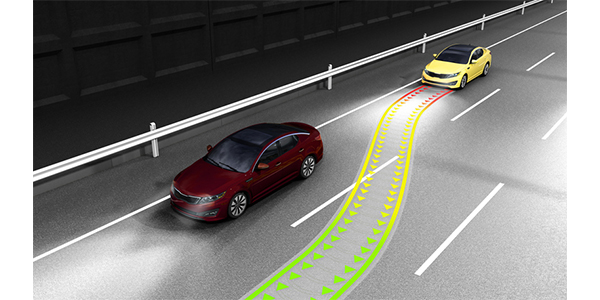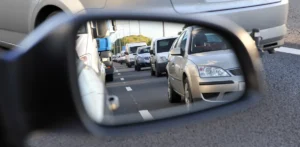Car accidents are a major problem for everyone involved, including drivers, passengers, and people walking on the street. With the advancement of automotive technology, collision avoidance systems (CAS) have become an important part of modern vehicles. They help reduce the number and severity of accidents. These systems use various sensors, cameras, and algorithms to detect potential accidents and help drivers avoid them. This article discusses how collision avoidance systems work and how they can help prevent car accidents, making the roads safer.
Understanding Collision Avoidance Systems
Advanced safety features, called collision avoidance systems, are designed to prevent or reduce the impact of an accident. Many new cars are equipped with these systems and are often part of a range of advanced driver assistance systems (ADAS). The main purpose of CAS is to detect potential collision risks and take corrective action to prevent or limit damage. This could mean warning the driver, applying the brakes, or even steering the car away from danger.
Collision prevention systems consist of many different components and technologies. Radar sensors, cameras, sound sensors, and LIDAR (Light Detection and Ranging) are the most important components. These components work together to monitor what is happening around the vehicle. Onboard computers use complex algorithms to look at the data collected by these sensors to detect potential threats and figure out how best to respond to them.
Different Types of Collision Avoidance Systems
There are many types of collision avoidance systems, each designed to address a particular type of collision. Many cars are equipped with systems such as blind spot detection, automatic emergency braking, lane departure warning, forward collision warning, and rear cross-traffic alert.
Forward Collision Warning (FCW): This system uses radar and cameras to monitor the distance between your car and the vehicle in front. If it thinks a collision is imminent, it sends visual and auditory signals to the driver so he can take action.
Automatic Emergency Braking (AEB): This feature can often be used in conjunction with Forward Collision Warning to automatically stop the car if the system determines that a collision is imminent and the driver does not respond to the warning. This can greatly reduce the damage of an effect or even prevent the effect from happening completely.
Lane Departure Warning (LDW): Cameras in the LDW system monitor the car’s position in its lane. If the car starts to drift out of its lane without the turn signal on, the system warns the driver. Lane Keep Assist is another feature available on some systems. This function gently guides the car back to its lane.
Blind Spot Detection (BSD): The BSD system uses sensors to monitor areas next to and slightly behind the car, also known as ‘blind spots’. If the system detects another vehicle in these areas, it will typically notify the driver by flashing the lights in the rearview mirror or making a sound.
Rear Cross Traffic Alert (RCTA): This is useful when reversing out of a parking space. It uses sensors to detect cars behind you and warn you of hazards you may not be able to see in your rearview mirror.
Avoid Rear-end Collisions
Accidents involving rearview mirrors are very common and usually happen because the driver is not paying attention or does not leave enough room behind the vehicle in front of him. Automatic emergency braking and forward collision warning systems are particularly effective in preventing such collisions. These systems can signal when a rear-end collision is imminent by continuously monitoring the distance between the vehicle in front and its speed. The system has the authority to brake itself if it thinks the driver is not responding quickly enough. This quick action can prevent a collision or soften its impact, saving both those in your car and those in the car in front of you.
Reducing Lane Departure Accidents
When people leave their lane it can cause very serious accidents, especially if they collide head-on with another vehicle or go off the road. Lane Departure Warning and Lane Keeping Assist help prevent such accidents by keeping the car in its lane. These systems use cameras to follow lines on the road to keep cars in their lane. If the car threatens to drift out of its lane, the driver is warned. In addition, some systems go one step further and help the driver bring the car back into its lane. This is especially useful on long journeys, where a tired driver may accidentally leave the lane.
Make Lane Changing Safer
Changing lanes can be dangerous, especially if there is a car in your blind spot. Blind Spot Recognition makes driving safer by monitoring these areas and letting the driver know if there are other vehicles nearby. This reduces the risk of side collisions when changing lanes. When the system detects a car in the blind spot, a warning light typically illuminates the corresponding rear-view mirror. If the driver indicates a lane change while the car is being followed, the system can provide an additional warning to stop the movement.
Make the Reversal Process Safer
Backing out of a parking lot or garage can be difficult, especially if it’s hard to see. Rear Cross Traffic Alert makes cars safer by warning the driver when a car is coming from the side. This is useful in busy parking lots or in residential areas where other cars, walkers, or cyclists may drive behind the vehicle. The system makes drivers aware of these potential hazards so they can stop and avoid a collision. In some cases, the system may also include automatic braking to prevent the car from reversing into the path of an oncoming car.
The Role of Driver Education and Awareness
While accident prevention systems make driving safer, they are not a substitute for careful driving. These systems are designed to help drivers make decisions, not replace them. That is why directors must remain alert and involved. To get the most out of these tools, you need to understand how they work and what their limitations are. It is also important to perform regular car maintenance to ensure that the collision avoidance systems are working properly. Sensors and cameras should be kept clean and free of debris and software updates should be added according to the vehicle manufacturer’s instructions.
The Future of Collision Avoidance Systems
It is believed that as automotive technology continues to develop, collision avoidance systems will become more intelligent. More sensors, better threat-hunting algorithms, and easier integration with other advanced driver assistance systems are some of the things that could be added in the future. Self-driving car technology is also on the rise. Crash prevention systems are very important in making these cars possible. Advanced sensors and algorithms help these cars stay safe and avoid accidents without the need for human assistance.
Conclusion
Collision avoidance systems are changing the way road safety is approached, giving drivers more advanced tools to stay safe and avoid collisions. Understanding how these systems work and using them while driving can significantly reduce your chance of an accident and make you safer on the road. As technology continues to develop, more breakthroughs in collision avoidance will occur in the future, making driving safer for everyone.




